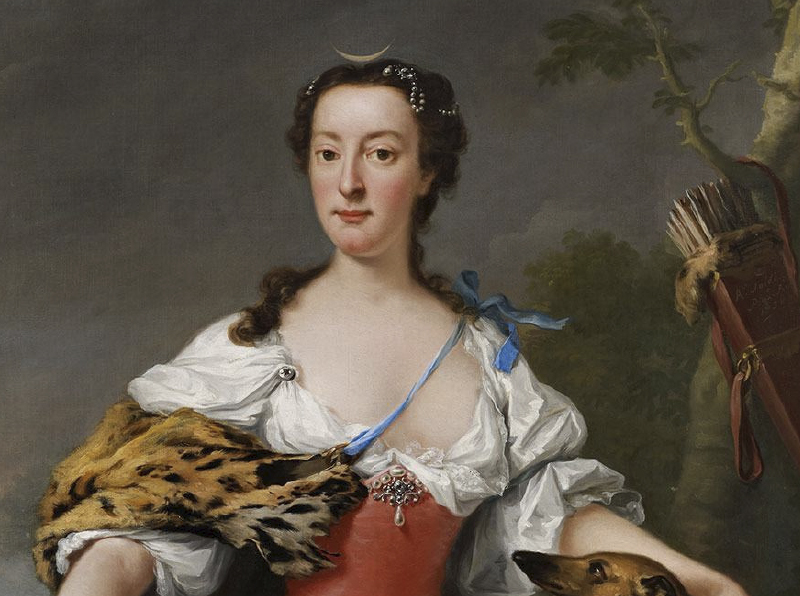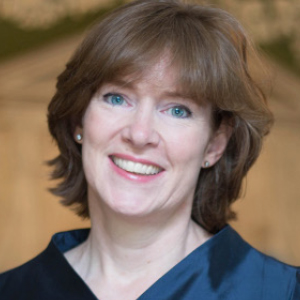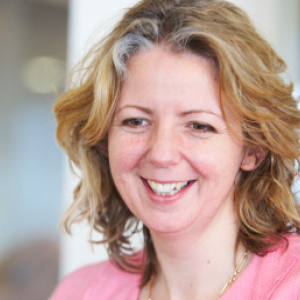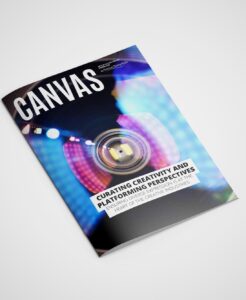
In celebration of the 2018 centenary of female suffrage, Director of the Foundling Museum, Caro Howell, chose to spend a year shining a light on the untold and often overlooked stories of the women who made the Foundling Hospital a possibility. Caro shares a behind-the-scenes view of the curation of the ‘Ladies of Quality & Distinction’ exhibition, while chair of the museum, Larissa Joy, shares her thoughts on the way in which the relationship between arts and charity continues to thrive in the modern day. Saxton Bampfylde proudly sponsored this remarkable exhibition.
 Caro Howell
Caro Howell
Director of the Foundling Museum
Where did the idea of ‘Ladies of Quality & Distinction’ exhibition begin?
Women are an absent presence in the Museum. Mothers who left babies at the Foundling Hospital were largely anonymous, the charity’s Governors were all men until the 20th century; the artists, musicians, writers and craftsmen who donated work were mainly men; and all bar one of the Governors’ portraits are male. So two years ago, when we were planning our 2018 season, I suggested we used the year of Vote100 to explore our history and collections from a female perspective. As with many a mammoth undertaking, it started with a fairly innocuous question; ‘I wonder if it would be possible to track down portraits of the 21 Ladies?’; Thomas Coram’s first, catalytic supporters.
Why should this exhibition resonate with women and men today?
The exhibition demonstrated that there is a difference between power and influence; that even when we lack power, we must never underestimate our ability to influence positive change. It’s also a great example of people using their privilege to help those in situations of extreme disadvantage. Finally, it reminds us of the need to be inclusive in our stories of success; that very rarely are great things achieved without the help of many and different people.
The Foundling Museum runs a biennial Foundling Fellowship programme. Can you tell us a bit more about the thinking behind this and the opportunities the programme has created for young people?
The Fellowship enables exceptional artists of all disciplines to animate our core story and continue our creative DNA. Projects devised by Fellows including Grayson Perry, Jacqueline Wilson, Yinka Shonibare MBE and Lily Cole, have enabled looked-after children to see themselves, the world, and their place in it, differently. Many also have unexpected legacies; Chris Watson’s Fellowship led to the Museum creating the first paid training programme for care-experienced young adults, enabling them to work in museums; while Michael Morpurgo’s led to the publication last year of his novella, Lucky Button.
What do you think are the key components of a successful relationship between the director of an organisation and the chair of their board?
There has to be mutual respect for the skills and expertise of each. When it comes to the arts, the chair and the director will both be doing it for love, not money, so the passion and vision needs to be shared. The two roles can also be isolating, so being a sounding board and critical friend for the other is crucial, as is having a sense of humour. I think it’s also very useful if the two personalities are different – I like working with people who think and act differently to me. Above all else, there needs to be loyalty and trust.
What are you most excited about that has happened at the Foundling Museum during your tenure?
I am very proud that we are so often described as ‘punching above our weight’ and, perhaps perversely, that so many of the team get poached by major national museums! I think it reflects the exceptional quality of the work we do, especially our exhibitions, artists’ projects, and pioneering work with very vulnerable children.
We have also acquired a number of major works of art that have immeasurably improved our ability to tell our core story. These include a commissioned painting by Sir Michael Craig-Martin, a sculpture by Yinka Shonibare MBE and, most recently, providing a lasting legacy for our Ladies of Quality & Distinction exhibition, the Portrait of Isabella, Duchess of Manchester, who was one of Coram’s first supporters.
What does the future hold for the Foundling Museum?
We are passionate in our belief that artists can galvanize the public into positive action. It lies at the heart of our historic story and it is the engine that drives much of our work. Our current exhibition, Bedrooms of London, is collaboration with the Childhood Trust, and highlights the crisis in social housing and its impact on child poverty in London. Katie Wilson’s photographs show the spaces in which children are sleeping, alongside first-hand narratives from families. Our aim is to challenge prejudices and stereotypes, and to inspire our visitors to get involved to directly help improve these children’s lives. In this way we honour the legacy of William Hogarth and George Frideric Handel and keep the story alive and relevant.
 Larissa Joy
Larissa Joy
Chair of the Foundling Museum and Non-executive Director at Saxton Bampfylde
What drew you to the Foundling Museum?
There are so many things! It combines my passions for the arts, education, social history, and issues affecting children and young people. The Museum shows how the arts – in all its forms – can really inspire individuals from all parts of society to make a positive, tangible difference and to help address some of society’s most intractable issues. That is something that really resonates with me. I will also always remember the first time I saw the museum’s poignant display of ‘tokens’: everyday objects the mothers left behind when they left their babies at the Foundling Hospital. I still find I have to catch my breath when I think about what they meant to the mothers who had no choice but to leave their babies.
The ‘Ladies of Quality & Distinction’ exhibition celebrated the women without whom the Foundling Hospital would never have been possible. What can the Foundling Museum teach us today about voices without power?
While the 21 Ladies of Quality and Distinction who signed Thomas Coram’s Ladies’ petition may have not had power in 18th Century Britain, they certainly had influence. It is sadly the case that it took the ladies to push the gentlemen to get the snowball hurtling down the mountain. But the ladies’ decision to support Coram’s cause was indisputably the catalyst that resulted in the Hospital being able to open its doors, taking in over 25,000 babies at risk of abandonment.
We know from the extensive archives that Thomas Coram had tried for ten years to convince the leading gentlemen of the day to support his cause. It was only when the 21 Ladies signed the Ladies’ petition and persuaded their husbands to commit to the cause that things actually started moving. So, quite literally, it would never have happened without them. The exhibition was about bringing those women to the fore and telling the story of the impact of their involvement in the year of the centenary of partial female suffrage.
The Foundling Hospital was simultaneously the UK’s first children’s charity and first public art gallery. Do you think the link between art, culture and charity remains as relevant in today’s world? Is this economic model today as powerful or is it less strong?
It is a timeless model I think, and one from which we draw inspiration in the work the museum does today with children and young people. William Hogarth, widely referred to as the Father of British Art, played a major role in helping Coram establish the Hospital, and he really understood this link, and found ‘win wins’ in the most inspiring way. He encouraged the leading contemporary artists of the day to give the finest examples of their art to the Hospital to help provide a role model to others in their giving; he organised an innovative lottery to raise money against his extraordinary painting ‘The March of the Guards to Finchley’, whilst all the while creating at the Hospital one of the most fashionable cultural destinations in 18th Century London to see and be seen. The excellent music education afforded to the Foundling children meant that there was such demand for places at the Foundling Hospital Chapel on a Sunday that families rented pews to secure their places.
What are the key characteristics and skills that boards should be looking for to help drive forward organisations in the arts and culture sector?
It’s a long – and growing – list! But I think towards the top of the list for me would probably be three things: genuinely diverse thinking – embracing the challenge, ideas and improvements that result from genuine diversity on a board – a shared commitment to ‘leaning in’ to support the development goals of the organisation; and a focus and commitment to good governance. And perhaps a fourth: a sense of humour, because not everything always goes according to plan!
In your opinion, what is the profile of an ideal non-executive?
For me it’s as much about the combination of skills across the board team as it is about any single individual. I have just done a brilliant day with one of my boards where we worked with the members to profile their individual strengths, workstyles and preferences and looked in detail at how they could get the best out of each other.
That exercise was so valuable as a way to really understand colleagues’ strengths and motivations and what makes them tick. It was one of the best workshops I have ever done, and it has already made a tangible difference to the way we are working with one other.
How do you like to structure your relationship with your CEO? What impact does this have on the Foundling Museum’s strategy?
I am fortunate to work closely with a number of very talented CEOs in my current board and chair roles. I think each relationship is quite different, but when I think about examples of where things are working well I’d say that openness, honesty, no surprises and alignment about the priorities are the key aspects of the relationship.
Is enough being done to encourage a more diverse representation of the population to engage with arts and culture in a social, political and economic sense?
I recently heard Maria Balshaw, the Director of Tate, talk on this topic and I found her views very inspiring. There are so many fantastic examples of arts organisations committing time and talent to this issue. The Donmar’s ‘Pay It Forward’ project to encourage more young people to engage with theatre is one inspiring example, but there are many others, for example Sistema and the work they do with young people and music.
The Foundling Museum runs an early years nursery programme that specifically seeks to include not only the preschool children from a very broad range of cultures and communities but also their carers and families. We also run a very exciting paid apprenticeship programme with young care leavers, equipping them with the skills and experience to run art-based workshops for children in care. There are just so many fantastic examples of where arts organisations are making an impact.
‘Tuned in’ funders really understand the impact of this work on building the fabric of an empathetic, cohesive civil society. To respond to the question of ‘is enough being done?’, many arts organisations understand this work is sometimes challenging to achieve and while there is often immediate impact, the even more meaningful impact comes with consistency and long-term commitment. If only there were more funding to make more of this work happen more consistently!
For more information visit the Foundling Museum’s website
